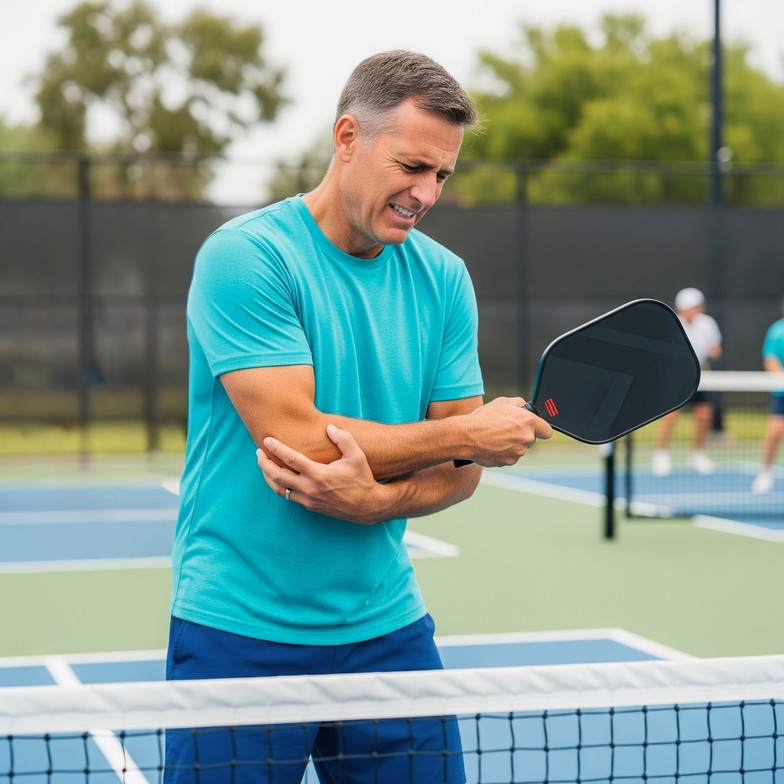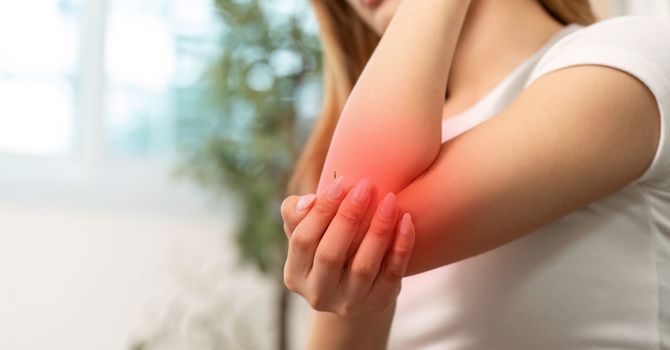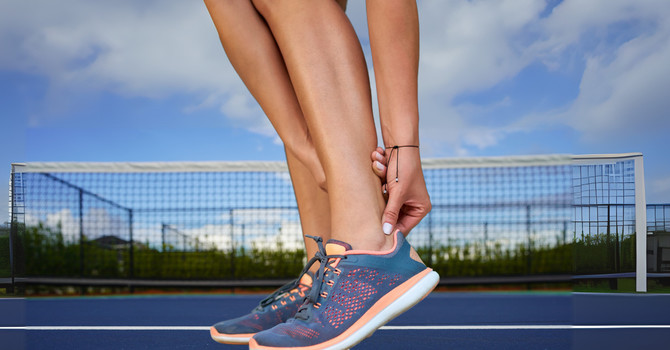
You’re dialed in. You’ve got the dinks, the drives, and the perfect court strategy. You’re playing the game you love.
Then, out of nowhere, your elbow starts shouting. It's the notorious "Pickleball Elbow," and it can sideline you faster than a foot fault.
Technically, it’s the same condition as Tennis Elbow (the fancy term is Lateral Epicondylitis), but for pickleball players, this injury hits different. It messes up your grip, your shot, and your overall game.
The good news? You don't have to just live with it. We’re going to break down exactly why your elbow is complaining and show you how to fix it, so you can get back to dominating the court.
What Is Pickleball Elbow?
Think of the tendons on the outside of your elbow like tiny, strong ropes. These ropes connect your forearm muscles to the bony bump on the outside of your elbow (that’s the lateral epicondyle).
When you play pickleball, especially when you grip the paddle or snap your wrist for a shot, those tiny ropes are working overtime.
Pickleball Elbow is an overuse injury where these tendons, specifically the Extensor Carpi Radialis Brevis (ECRB), become inflamed and stressed. It’s usually not from one bad shot; it’s the repeated strain from countless dinks and drives.
Why Your Elbow Is Protesting
If your elbow feels like it’s staging a protest, it’s probably due to one or more of these culprits:
-
Overuse: The obvious one. Playing for hours without proper rest or conditioning wears down the tendons.
-
Poor Technique: This is huge in pickleball. If you’re snapping your wrist for backhands instead of using your core and shoulder, your elbow is taking the brunt of the force.
-
Equipment Issues: A paddle grip that’s too small or too large can make you squeeze tighter than necessary, overloading your forearm muscles.
Recognizing the Signs
How do you know if Pickleball Elbow has crashed your party? Look out for these symptoms:
-
Pain and tenderness on the bony knob outside your elbow.
-
A weak grip. Simple tasks like shaking hands or turning a doorknob feel painful.
-
Pain that flares up during activities using your forearm, especially that backhand shot.
-
Pain that sometimes travels down your forearm.
If these signs sound familiar, it’s time to take action.
The Pickleball Problem: Biomechanics and Movement
Pickleball might look simple, but the movements are dynamic and put unique stress on your elbow.
The wrist-heavy backhand is a major offender. Many players snap the wrist to generate power, which significantly loads the lateral elbow structures. Also, the constant, tight grip required for rapid-fire volleys and tense points at the kitchen line keeps your forearm muscles under constant tension.
You repeat these movements hundreds of times in a single game. It’s a marathon for your elbow, even if the court seems small.
Your Path Back: Solutions for Recovery
Staying injured is a choice. You don’t have to "just live with" elbow pain. The good news is, most cases respond well to focused, conservative care.
We focus on reducing pain, calming inflammation, and then restoring strength and function.
1. Smart Rest and Ice
"Relative rest" doesn't necessarily mean sitting on the couch for weeks. It means reducing intensity and duration. If it hurts, don't do it. Applying ice for 15 to 20 minutes several times a day, especially after playing, helps reduce inflammation.
2. Specialized Sports Rehabilitation
This is where you get real solutions. Seek out sports chiropractors and rehab specialists. Here at 417 Performance in Southwest Missouri, we focus on:
-
Soft Tissue Mobilization: Releasing the tightness in your forearm muscles to reduce tension on the tendons.
-
Joint Mobilization: Restoring proper mechanics to the elbow, wrist, and even shoulder, which all affect elbow function.
-
Exercise Rehab: This is vital for long-term recovery. We guide you through specific stretching and strengthening exercises for the forearm, gradually building muscle to support the tendons. We also focus on strengthening the shoulder and core to take the load off your elbow.
3. Technique and Equipment Review
Don't ignore the root cause. A session with a coach to analyze your stroke mechanics and a review of your paddle grip size are essential. Correcting poor form is a permanent fix.
Stop Guessing. Start Healing.
Getting injured is part of playing hard. But staying injured is a choice you don't have to make. You've got the drive to win on the court; now, apply that drive to your recovery.
Don't let Pickleball Elbow sideline you in Springfield, MO, or anywhere in the Ozarks. Ready to figure out exactly what’s going on with your elbow and get a personalized plan to get you back to 100%?
Book a no-obligation Discovery Call with us at 417 Performance today. Let's get you back in the game, stronger than ever. No guilt, no pressure, just solutions.
.jpg)


.jpg)


